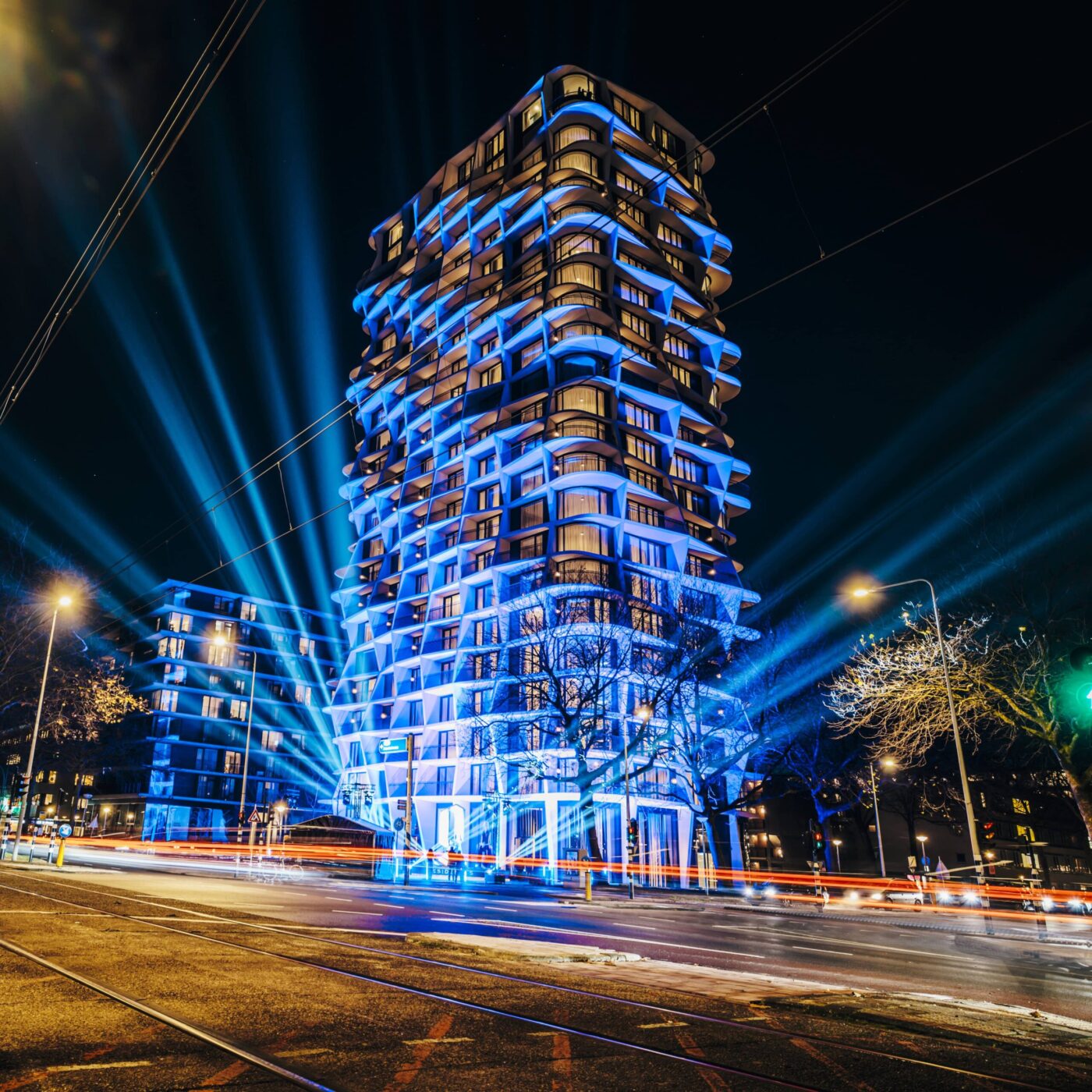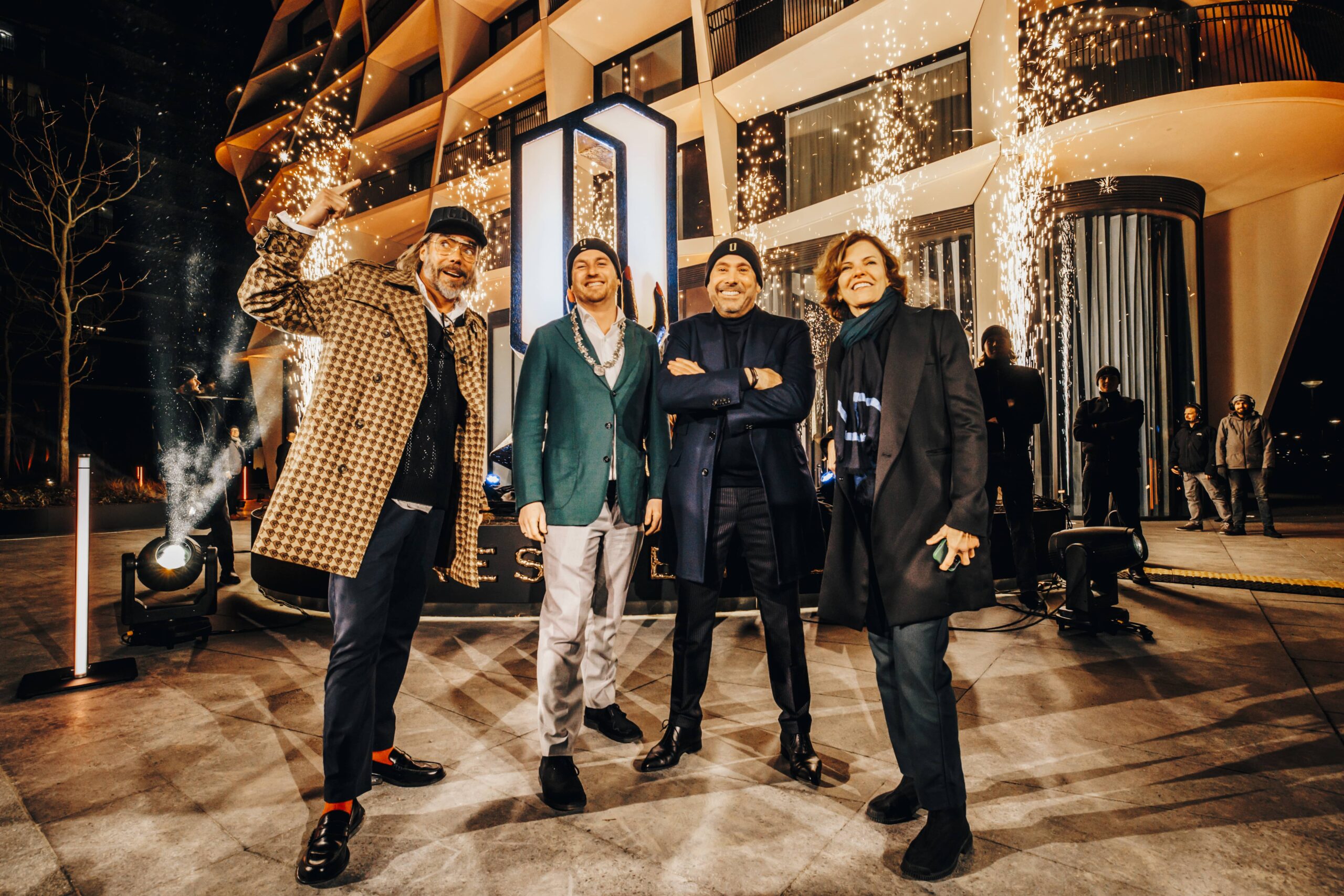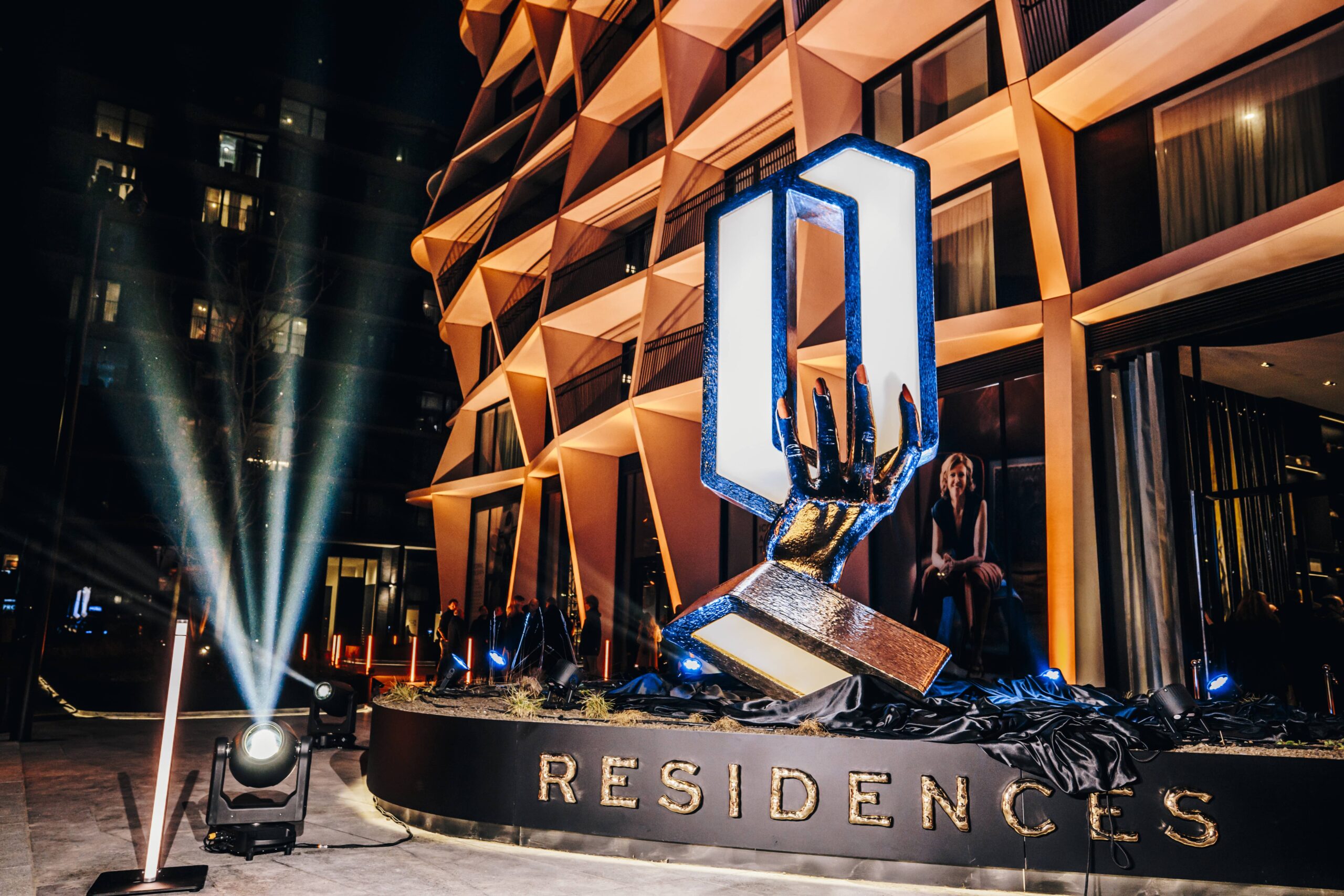
13-12-2022
AMSTERDAM BOASTS A NEW LANDMARK: Q RESIDENCES NOW OPEN
Amsterdam boasts a new landmark. On Monday 12 December the opening of an architecturally daring apartment complex took place in the garden city styled neighbourhood of Buitenveldert. It has been carefully embedded into the urban environment and is known as: Q Residences. This complex, which covers an area of 27,600 m2 and includes 248 rental apartments, consists of a plaza and two residential buildings, namely the medium-high Qube building and the high-rise and flamboyant Quartz building. Of the 248 homes 99 have been constructed for the mid-segment. For this project on the corner of the Buitenveldertselaan and the Van Nijenrodeweg, developer Kroonenberg Groep joined forces with the American star architect Jeanne Gang. As Lesley Bamberger, CEO of Kroonenberg Groep, explains, “Quartz has such an iconic image that you cannot walk past without gazing at it. Whenever I do that it brings a smile to my face and makes me feel proud. Together we have added something unique to the city of Amsterdam which is having an impact on the area as a whole.” The Amsterdam-based firm Rijnboutt was responsible for the urban embedding and acted as co-architect. In the opinion of Rijnboutt’s own Frederik Vermeesch, “Q Residences is a wonderful example of high-quality densification in Buitenveldert, based on the principles of the General Expansion Plan (AUP). It is high quality in terms of its urban design, its architectural design and its materials and details.” NEOO was responsible for managing the development from master plan right through to realisation. Contractor J.P. van Eesteren was responsible for the construction.

Unveiling of the Studio Job sculpture
On the attractive green plaza, which was designed by Piet Oudolf, Reinier van Dantzig, councillor for House Building and Urban Development, unveiled the Studio Job creation – which is a life-size sculpture featuring the Q logo – together with Jeanne Gang and Lesley Bamberger. Reinier Van Dantzig was standing in as deputy mayor for mayor of Amsterdam Femke Halsema who was unable to attend at the last minute. Halsema regretted not being able to unveil the sculpture herself and stressed the significance of Q Residences for the city. “Amsterdam is proud of this new gem in the city. We would like to thank all those concerned for once again giving the city a push in the right direction.” The unveiling ceremony was preceded by an informative presentation in the lobby of the Quartz building, which was presided over by Humberto Tan. Architect Jeanne Gang adds, “The design of Q Residences creates a connection between the residents themselves and the greenery that defines the Buitenveldert neighbourhood. On the ground floor the Qube and Quartz buildings form a new, spacious public area which brings people together around art and landscape. The façade of the Quartz building has a larger surface area and the fact that the balconies are staggered means that neighbours can have visible contact with each other. Residents have to feel good, both in their homes and in their surroundings.”

Those present also included Piet Boon, Frederik Molenschot, Petra Blaisse and Job Smeets, the artists who played such an important role in the embellishment of this iconic complex. Job Smeets, from Studio Job, explains more about the sculpture. “The sculpture of a woman’s hand holding the illuminated letter Q was cast in bronze and is five metres high. The work of art, which is called ‘Hers’, represents the creativity of the female architect. It is a statement to passers-by about women who are not only linked to this building, but also to important positions in the modern world.”
Sustainability Sustainability served a dual purpose during the construction of Q Residences. In the first place the project had to comply, of course, with Amsterdam’s ambitious sustainability programme. A second purpose was to continue building on the garden city concept that Cornelis van Eesteren had in mind in his General Expansion Plan [Algemeen Uitbreidingsplan] for Buitenveldert in 1935. Consequently, the buildings are grouped around a green plaza which is also open to the public. Solar panels have been installed on the roofs to provide electricity to the charging stations for electric cars. Both residential towers have been carefully insulated and both have integrated heating and cooling systems.